- News
- Reviews
- Bikes
- Accessories
- Accessories - misc
- Computer mounts
- Bags
- Bar ends
- Bike bags & cases
- Bottle cages
- Bottles
- Cameras
- Car racks
- Child seats
- Computers
- Glasses
- GPS units
- Helmets
- Lights - front
- Lights - rear
- Lights - sets
- Locks
- Mirrors
- Mudguards
- Racks
- Pumps & CO2 inflators
- Puncture kits
- Reflectives
- Smart watches
- Stands and racks
- Trailers
- Clothing
- Components
- Bar tape & grips
- Bottom brackets
- Brake & gear cables
- Brake & STI levers
- Brake pads & spares
- Brakes
- Cassettes & freewheels
- Chains
- Chainsets & chainrings
- Derailleurs - front
- Derailleurs - rear
- Forks
- Gear levers & shifters
- Groupsets
- Handlebars & extensions
- Headsets
- Hubs
- Inner tubes
- Pedals
- Quick releases & skewers
- Saddles
- Seatposts
- Stems
- Wheels
- Tyres
- Health, fitness and nutrition
- Tools and workshop
- Miscellaneous
- Buyers Guides
- Features
- Forum
- Recommends
- Podcast
review
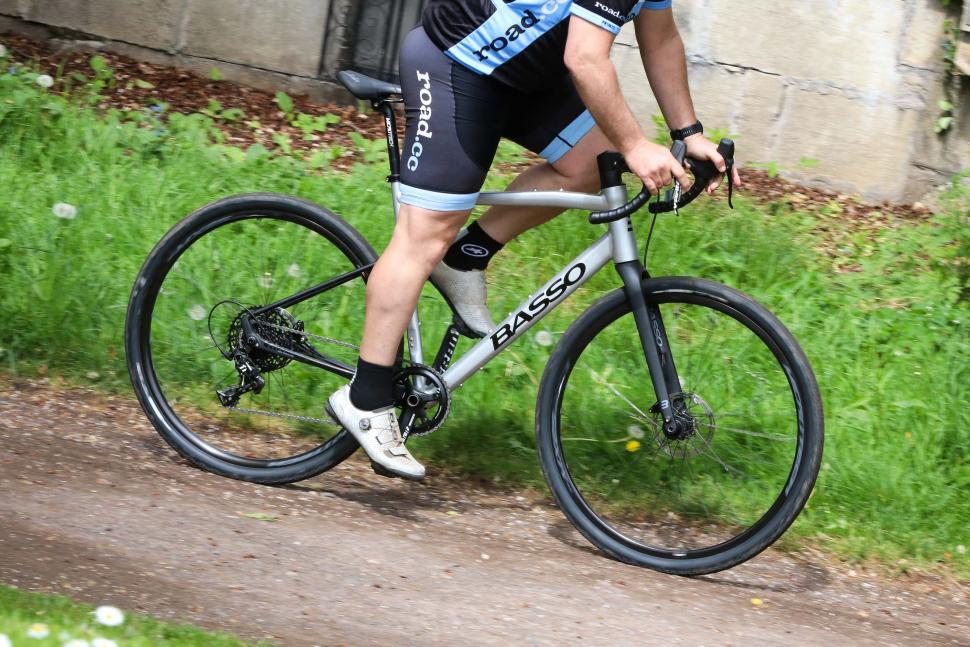 2022 Basso Tera Gravel Apex 1x11 - riding 1.jpg
2022 Basso Tera Gravel Apex 1x11 - riding 1.jpg£2,399.00
VERDICT:
Subtle suspension sytem doesn't detract from the ride feel, but the high weight does
Impressive comfort
1:1 bottom gear helps on the climbs
Good tyre clearance
Not the lightest
Minimal travel in the pivot system
Weight:
10,740g
Contact:
At road.cc every product is thoroughly tested for as long as it takes to get a proper insight into how well it works. Our reviewers are experienced cyclists that we trust to be objective. While we strive to ensure that opinions expressed are backed up by facts, reviews are by their nature an informed opinion, not a definitive verdict. We don't intentionally try to break anything (except locks) but we do try to look for weak points in any design. The overall score is not just an average of the other scores: it reflects both a product's function and value – with value determined by how a product compares with items of similar spec, quality, and price.
What the road.cc scores meanGood scores are more common than bad, because fortunately good products are more common than bad.
- Exceptional
- Excellent
- Very Good
- Good
- Quite good
- Average
- Not so good
- Poor
- Bad
- Appalling
The Basso Tera Gravel Apex 1x11 makes full use of the benefits of differing materials to provide stiffness and comfort, helped by the fixed-pivot rear triangle suspension system. It's a heavy bike for the money, but has a pleasurable ride quality – it really comes down to whether you think suspension has a place in the gravel world or not.
First up, I'll put my cards on the table: I'm still not convinced I want to see suspension systems on gravel bikes. As I've mentioned in previous reviews it's the simplicity of the bikes I like, and the challenges of riding them on technical sections off-road keeps them fun.
It reminds me of riding rigid mountain bikes in my early teens – it's all about using your knees and elbows to soak up the bumps, while the relatively skinny rubber scrabbles about on the loose surface beneath.
I'll give it to the Basso though, it's made me think maybe a small amount of 'give' is acceptable. The carbon fibre rear triangle, with its single-pivot design mounted to an aluminium alloy seat tube, gives 8mm of travel, and it's impressively subtle.
It takes the edge of off some of the biggest bumps, and on rough roads or flat, hard-packed trails it cushions the ride almost completely.
Thankfully, that doesn't mean the feel from the rear end has been completely muted. You can still feel what the rear tyre is up to, so you can position the Basso on a loose surface without any guesswork involved.
Out of the saddle efforts don't feel softened by the suspension either. I don't want that 'soft tyre' feel when I start hammering the power down, especially on the road sections in between where the going is much smoother.
Chunky build
As for the rest of the bike? Well, the chunky profiled down and head tubes give the stiffness you'd expect, and it's the same with the bottom bracket junction.
Overall, the Tera feels very firm where it needs to be. The fork legs are quite slender as they leave the crown, though, and this provides some flex to take the sting out of the front end.
Basically, I could feel the tightness of the main triangle and its responsiveness, while the fork and rear triangle brought a bit of refinement to the ride. It's a quality set up.
Climbing
In fact, the only place the Basso is left wanting is on a steep climb. The weight is noticeable as the trail gets steeper and it can feel sluggish if the hill drags on for a while.
Short, sharp inclines are easy enough to deal with, the stiffness allowing you to get out of the saddle and power through, but if you are out for a longer ride on undulating terrain, the hills can become a bit of a chore.
Handling wise, things are good though. The geometry gives quite a balanced front end; it's entirely neutral and doesn't give any surprises when negotiating all types of terrain. This is no gravel racer, so I never really hankered for anything quicker on the steering front. It's a fun and easy bike to ride quickly, but it doesn't really give you the inclination to rag it anywhere.
On the descents the Tera is well behaved. Its weight works for it here, making it a quick descender with a planted feel when the speed picks up. Even in the wet, when the light tread of the tyres is struggling to bite the slippery surface, the Tera feels controllable... to an extent, anyway. But even with no grip it slides predictably.
Overall, the Basso is a pleasant place to be. It's no lightweight gravel racer, but it is a bike that works well on longer trips or for those new to gravel and coming from more predictable surfaces. Comfort is impressive too, without detracting form the overall ride feel.
Frame and fork
As I've mentioned the Tera uses an aluminium alloy main triangle with a carbon fibre rear triangle that's plugged together at the bottom bracket junction, and attached by a pivot system on the seat tube.
It's been a long time since I've seen such a mix of materials; brands like Litespeed used to blend carbon chainstays and seatstays with titanium frames back at the turn of the century, as did others with aluminium frames.
The rear end uses the compliance of the carbon layup, alongside the pivot, to create comfort, and on the whole the mixture of materials works well. The alloy section isn't the most refined on the market with chunky welds throughout, and I must admit I'm not a massive fan of the silver finish. It leaves the Tera looking a little 'raw,' borderline prototype.
> 19 of the best 2021 gravel bikes & adventure road bikes
On Basso's website they show red and green options, and both look great – those schemes make the Tera look more like its price suggests it should.
Mounts
You'll find plenty of mounts on this, with three positions for bottle cages: on the top of the down tube, underneath the top tube, and on the seat tube. The upper down tube position has three bolt holes, allowing some adjustment for a larger bottle if you are using a frame bag.
There are mounts on the top tube for a bento box too.
Due to the pivot you can't carry a rack, so it's not as versatile as some bikes... then again, with the amount of frame and seat post mounted bags out there, it's not a major issue.
There are bolt holes for mudguards, but not in the traditional sense. Basso makes its Evo mudguards to fit the Tera's specific mounting positions and, while I can't comment on their performance, they are aluminium and will perfectly suit the maximum tyre clearance of the Tera at 45mm.
There aren't any luggage mounts on the fork legs but again, unless you are planning epic adventures, that isn't a big issue.
Routing
Like many brands lately, Basso has gone for a clean look with the cables and hoses running internally through the stem into the frame.
The only exception is the front brake hose, which does look a little lonely sitting out there on its way from the handlebar to the fork leg. The Tera uses 12mm thru-axles and flat mounts for the brake calipers.
Geometry
The Tera is available in just four sizes, with top tubes ranging from 501mm to 590mm. There are some pretty big jumps of 30mm a time in top tube length between each size. This one here is the large, which gets a top tube length of 560mm, a seat tube of 540mm, and a head tube of 180mm.
The seat tube angle is 73.5°, which at least gives you quite a forward position to get the power down, while the head angle is a much more sedate 70°. The chainstay length is 425mm. If you are a stack and reach kind of rider, you are looking at 592mm and 384mm respectively.
Finishing kit
On Chicken Cycle Kit's (the UK distributor) website they offer the Tera in two builds: this Apex 1x (£2,399) or Shimano's GRX 600 (£2,499) in a 1x set up.
A frameset is also available for £1,199, and if you are interested in creating your own build it's worth noting the Tera will accept both 1x and 2x builds. It's available in either the red or this silver.
The Apex groupset offers decent shifting quality once you get used to the DoubleTap thing, and highly modulated braking from the hydraulic calipers and 160mm rotors.
The single ring chainset is 42t, which pairs nicely with the 11/42t cassette on the rear. It's a bit spinny at speed for the road, but off-road it gives a good spread of gears for the majority of riders.
The Apex rear mech includes a clutch which stops it bouncing around and reduces chain slap.
As for the cockpit, that involves a MicroTech XL Gravel handlebar with flared drops for more stability at speed, while the narrower hood section still allows the handling to feel quick and responsive at lower speeds. The stem is from Basso and diverts those cables and the rear brake hose into the frame for a smooth finish.
The MicroTech seatpost is aluminium and you also get a Selle San Marco GND saddle.
To be fair, none of this stuff is exactly groundbreaking, or even flash for a bike of this price, but it does the job without any real faults.
Wheels and tyres
Micro Tech also provides the wheels, on MX25 rims. Again, they are nothing flash; regular shallow alloy rims with 28 spokes front and rear, mated to basic hubs. They are tubeless ready though, and to be fair I had no issues with them throughout testing. They aren't light but cope with the inevitable abuse. I'd only really upgrade when I needed to.
> The 11 gravel specific products you never knew you needed - bar tape, shoes, helmets and more
The tyres are Maxxis Ramblers in a 45mm width. I like the Ramblers. I've used them on a few bikes now and I like the way they feel and ride. The tread is minimal, so they are only really any use if it's wet on hard packed surfaces, but they're more versatile when the going is dry. Rolling resistance is pretty good, as is the durability.
Value
As I mentioned, this build is £2,399, which I think is a fair chunk of money for what is a minimal spec gravel bike – regardless of the carbon rear end. Many brands have gone down the front suspension route, such as with the Lauf fork or Specialized's Future Shock system found on its Diverge.
Probably the closest design to the Tera though is the Cannondale Topstone, with the Carbon 5 being the closest in price. That costs £2,699.99 but has a carbon frame and rear suspension system, plus a 2x blend of Shimano's GRX 800, 600 and 400 groupsets. Tyre clearance is less at 40mm, though.
Other than that, you are probably looking at any decent aluminium gravel bike with a suspension seatpost instead.
In my recent review I said the Forme Monsal 1 was one of the most comfortable gravel bikes I've ridden, and fun too. It also comes with an Apex groupset and alloy finishing kit, for just £1,680.
Add the Cane Creek eeSilk+ seat post for £224.99 and you have a great gravel bike with 35mm of rear end travel for less than two grand!
Overall
The Tera has taught me that I don't need to be overly worried about suspension systems detracting from the involvement of the ride. The system here works well and, when paired with the fork, isolates the rider from the worst of the vibrations with isolating you from the feel. That aside, this is a heavy bike and it's not that well specced for the money.
Verdict
Subtle suspension sytem doesn't detract from the ride feel, but the high weight does
road.cc test report
Make and model: Basso Tera Gravel Apex 1x11
Size tested: Large, 56cm
About the bike
List the components used to build up the bike.
Components: SRAM Apex 1x11
Chainset: SRAM Apex 1x11 42t
Brakes: SRAM Apex Calipers
Cassette: SRAM Apex 11x 11/42T
Chain: SRAM Apex 11x
Saddle: San Marco GND
Handlebar: MicroTech XL Gravel
Stem/Seatpost: Basso Integrated
Wheelset: MT MX 25
Tyres: Maxxis Rambler TR 700x45c
Tell us what the bike is for and who it's aimed at. What do the manufacturers say about it? How does that compare to your own feelings about the bike?
Basso says, "The first mixed-material, semi-suspension, performance-oriented gravel solution on the market. Taking the best properties of not one, but two materials and constructing a better way to explore new horizons. A stunning aluminium frame is complimented by a carbon fork and a unique carbon rear triangle suspension system.
The Tera is the ultimate trekking and gravel bike. The internally routed cables provide not only clean aesthetics but protection from the elements. It's compatible with both 1x and 2x groupsets so you can use it for the long commutes as well as the wildest of gravel rides.
4 bottle cage mounting positions mean you can personalise and customise your adventure and bike ride to your exact specifications. Thanks to the specifically designed frame shape, it can also carry multiple bags throughout the frame, on the seat post and across the handlebars meaning you can be out all day and carry everything you need.
The carbon rear triangle on the Tera is truly the focal point of this frame. Providing a unique, fixed-pivot suspension solution. The carbon layup has been studied to ensure an extremely reliable structure that is both vertically compliant yet laterally efficient and reactive when riding providing maximum power output at full pace. The forks on the front have also been given this high level of attention to detail. The forks work with the rear triangle of the bike to provide a certain level of suspension and comfort while creating stiffness to prevent power loss associated with suspension forks.
The Tera has been built to be as versatile as possible, ready for anything you throw at it. It's ideal for a rider looking for bike designed for versatility and all-day comfort. Whether riding through the city or taking on the most demanding of gravel and trekking adventures, the unique suspension design but can handle it all."
The rear certinaly does bring added comfort to the ride making this a bike a good choice for those long, rough rides.
Where does this model sit in the range? Tell us briefly about the cheaper options and the more expensive options
There are two models available: this Apex 1x11 for £2,399 and a Shimano GRX 600 1x11 for £2,499.
Frame and fork
Overall rating for frame and fork
7/10
Tell us about the build quality and finish of the frame and fork?
The welds aren't the most subtle, but the overall build quality is to a high standard.
Tell us about the materials used in the frame and fork?
The frame is constructed from aluminium alloy for the main triangle with a carbon fibre pivoting rear triangle. The fork is full carbon fibre.
Frame/Fork specs:
Sizes: L (56), M (53), S (51), XL (58),
Compatible with 1x & 2x Groupsets
Cable Integration: Fully Integrated
Brakes: Disc
Bottom Bracket:
Headset: Fully Integrated
Tyre Clearance: 45mm
Thru Axles: 100/142mm x 12mm (125x165mm)
The rear triangle has a unique, fixed-pivot suspension solution with 8mm of flex.
The carbon layup of the rear triangle was developed to ensure an extremely reliable structure that is both vertically compliant yet laterally efficient and reactive.
Fork shape and layup was developed to ensure a more compliant, forgiving ride while maintaining horizontal stiffness for responsive handling.
Tyre clearance allows up to 45mm tyres to be fitted.
Internal routed cables for clean aesthetics and cable protection.
Compatible with both 1x and 2x groupsets.
4 bottle cage mounting positions.
Tell us about the geometry of the frame and fork?
The geometry is quite slack at the front end, which keeps the handling easy to live with on loose surfaces, while the lengthy wheelbase adds stability. The head tube length gives a more upright position than a road bike of similar size, for a more relaxed ride.
How was the bike in terms of height and reach? How did it compare to other bikes of the same stated size?
The stack and reach figures are fairly typical for a bike of this size.
Riding the bike
Was the bike comfortable to ride? Tell us how you felt about the ride quality.
The ride quality is very comfortable thanks to the pivot system of the rear triangle. Slight fork flex helps front end plushness too.
Did the bike feel stiff in the right places? Did any part of the bike feel too stiff or too flexible?
The stiffness around the bottom bracket copes with all of the power you can put through it.
How did the bike transfer power? Did it feel efficient?
On the whole power transfer is pretty good, although its weight does slow things down a touch.
Was there any toe-clip overlap with the front wheel? If so was it a problem?
No.
How would you describe the steering? Was it lively neutral or unresponsive? Neutral.
Tell us some more about the handling. How did the bike feel overall? Did it do particular things well or badly?
The neutral handling gives a confident ride on even the most slippery or loosest of surfaces.
Which components had the most effect (good or bad) on the bike's comfort? would you recommend any changes?
Aside from the suspension system the saddle works well and is comfortable for many miles.
Which components had the most effect (good or bad) on the bike's stiffness? would you recommend any changes?
The handlebar and stem make a stiff front end for out of the saddle efforts.
Which components had the most effect (good or bad) on the bike's efficiency? would you recommend any changes?
The Basso's weight does hamper efficiency if you are after a spirited ride.
Rate the bike for efficiency of power transfer:
8/10
Rate the bike for acceleration:
7/10
Rate the bike for sprinting:
7/10
Rate the bike for high speed stability:
8/10
Rate the bike for cruising speed stability:
8/10
Rate the bike for low speed stability:
8/10
Rate the bike for flat cornering:
8/10
Rate the bike for cornering on descents:
8/10
Rate the bike for climbing:
7/10
The drivetrain
Rate the drivetrain for performance:
8/10
Rate the drivetrain for durability:
8/10
Rate the drivetrain for weight:
7/10
Tell us some more about the drivetrain. Anything you particularly did or didn't like? Any components which didn't work well together?
The groupset gives a good spread of gears for off-road duties, although the gearing is a little low if you are going to do a lot of road stuff.
Wheels and tyres
Rate the wheels for performance:
7/10
Rate the wheels for durability:
7/10
Rate the wheels for weight:
6/10
Rate the wheels for comfort:
7/10
Tell us some more about the wheels.Did they work well in the conditions you encountered? Would you change the wheels? If so what for?
The wheels are robust, showing no weaknesses during testing. They are heavy, but you can always upgrade at a later date.
Rate the tyres for performance:
8/10
Rate the tyres for durability:
8/10
Rate the tyres for weight:
7/10
Rate the tyres for comfort:
8/10
Tell us some more about the tyres. Did they work well in the conditions you encountered? Would you change the tyres? If so what for?
The Rambler tyres are good for dry and hardpacked surfaces; they have minimal tread for when the going gets wet. They are durable though and have a decent ride feel.
Controls
Rate the controls for performance:
8/10
Rate the controls for durability:
8/10
Rate the controls for weight:
7/10
Rate the controls for comfort:
7/10
Tell us some more about the controls. Any particularly good or bad components? How would the controls work for larger or smaller riders?
The stem hides the cables and hoses for a smooth look, and the handlebar is flared which gives a feeling of stability when using the drops off-road.
Your summary
Did you enjoy riding the bike? Yes
Would you consider buying the bike? Possibly, but it is quite weighty
Would you recommend the bike to a friend? Again, possibly. There are cheaper ways to boost comfort
How does the price compare to that of similar bikes in the market, including ones recently tested on road.cc?
There aren't many bikes on the market with similar suspension systems: it's only really the Cannondale mentioned in the review. That Cannondale is arguably a better value bike, but going down the suspension seatpost route is a cheaper option.
Rate the bike overall for performance:
7/10
Rate the bike overall for value:
4/10
Use this box to explain your overall score
The rear triangle does bring extra comfort, but no more than a decent suspension seatpost does, so I have to balance it with the extra weight and cost. It's not a cheap bike, but it's well made and the geometry is very relaxing for all kinds of gravel riding.
About the tester
Age: 42
I usually ride: This month's test bike My best bike is: B'Twin Ultra CF draped in the latest bling test components
I've been riding for: Over 20 years I ride: Every day I would class myself as: Expert
I regularly do the following types of riding: time trialling, commuting, club rides, sportives, fixed/singlespeed,
Since writing his first bike review for road.cc back in early 2009 senior product reviewer Stu has tested more than a thousand pieces of kit, and hundreds of bikes.
With an HND in mechanical engineering and previous roles as a CNC programmer/machinist, draughtsman and development engineer (working in new product design) Stu understands what it takes to bring a product to market. A mix of that knowledge combined with his love of road and gravel cycling puts him in the ideal position to put the latest kit through its paces.
He first made the switch to road cycling in 1999, primarily for fitness, but it didn’t take long for his competitive side to take over which led to around ten years as a time triallist and some pretty decent results. These days though riding is more about escapism, keeping the weight off and just enjoying the fact that he gets to ride the latest technology as part of his day job.
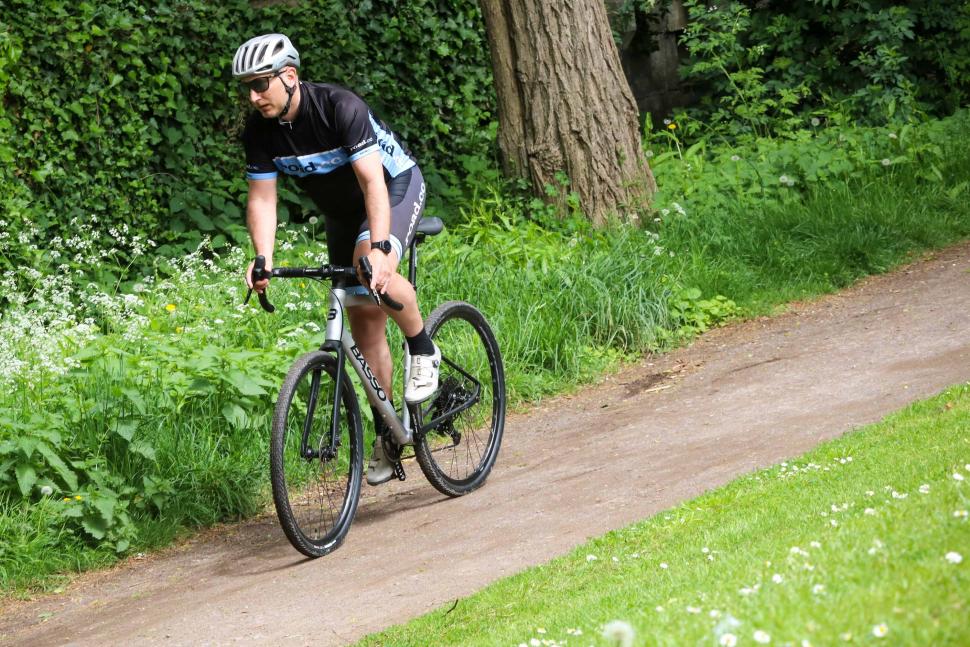
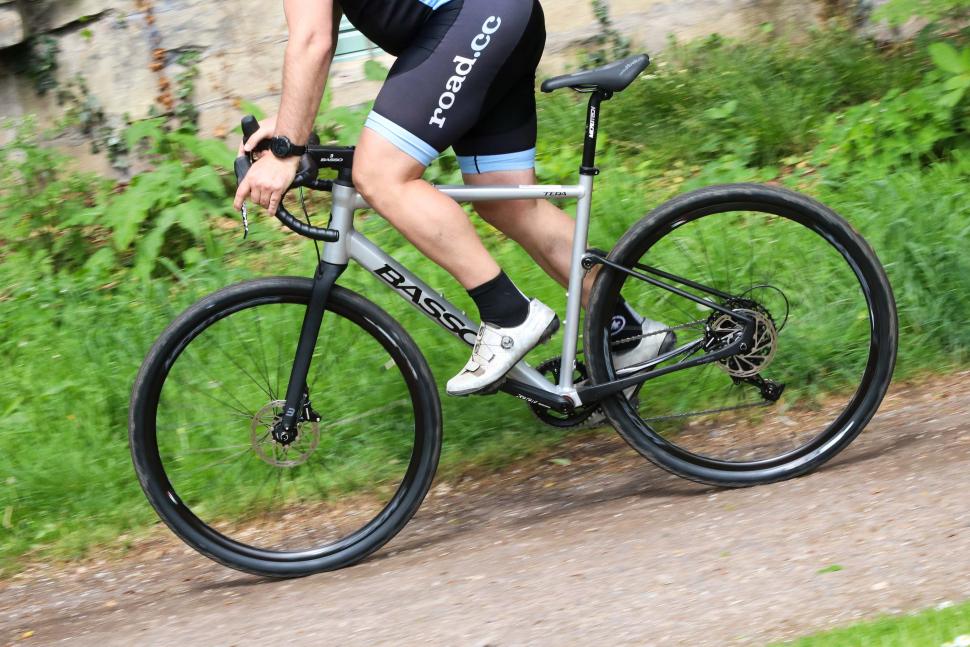











































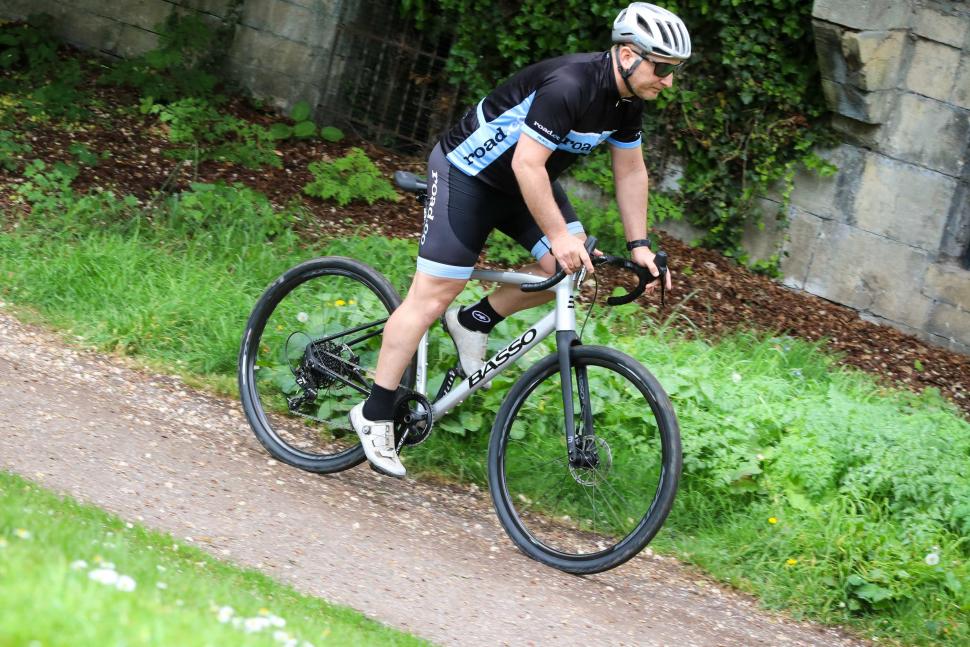


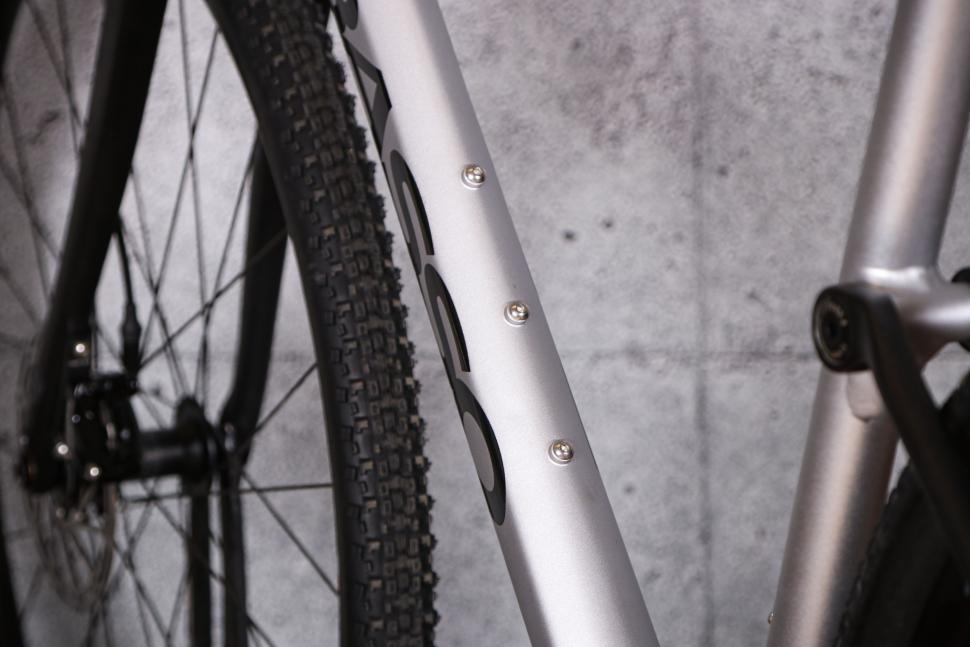
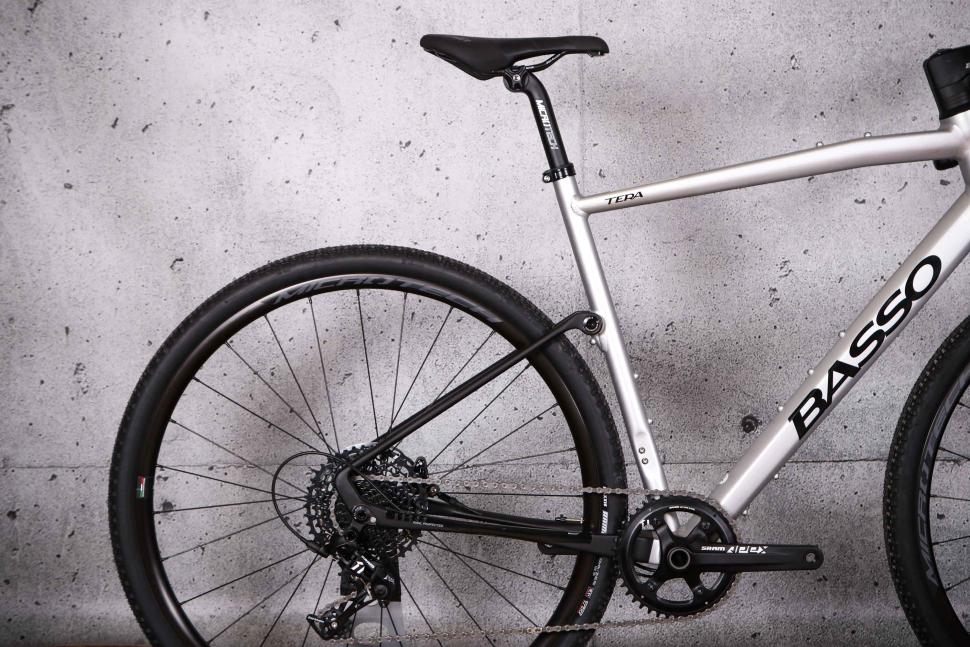
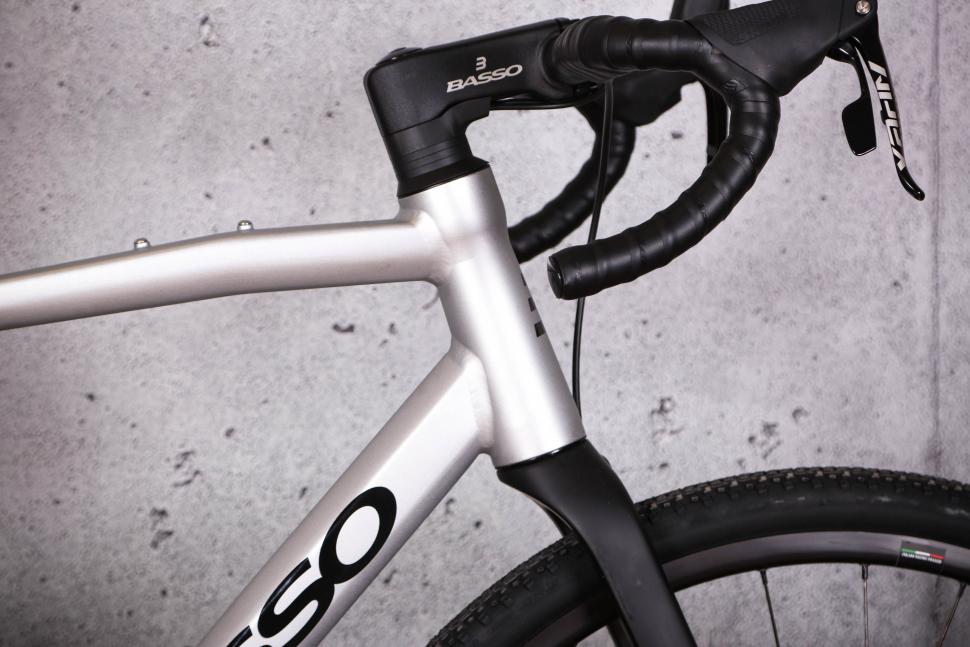
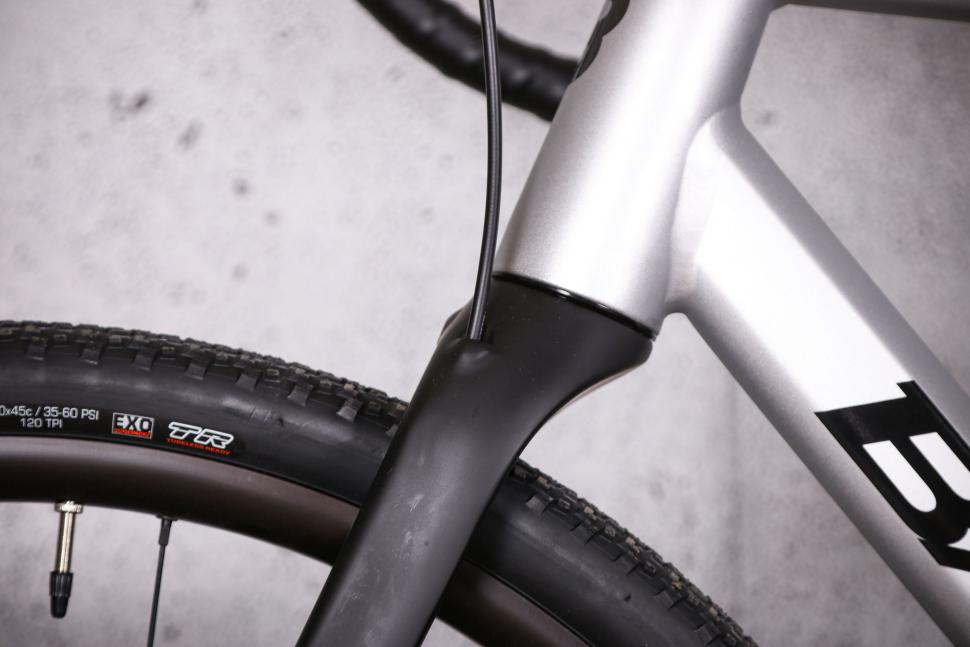


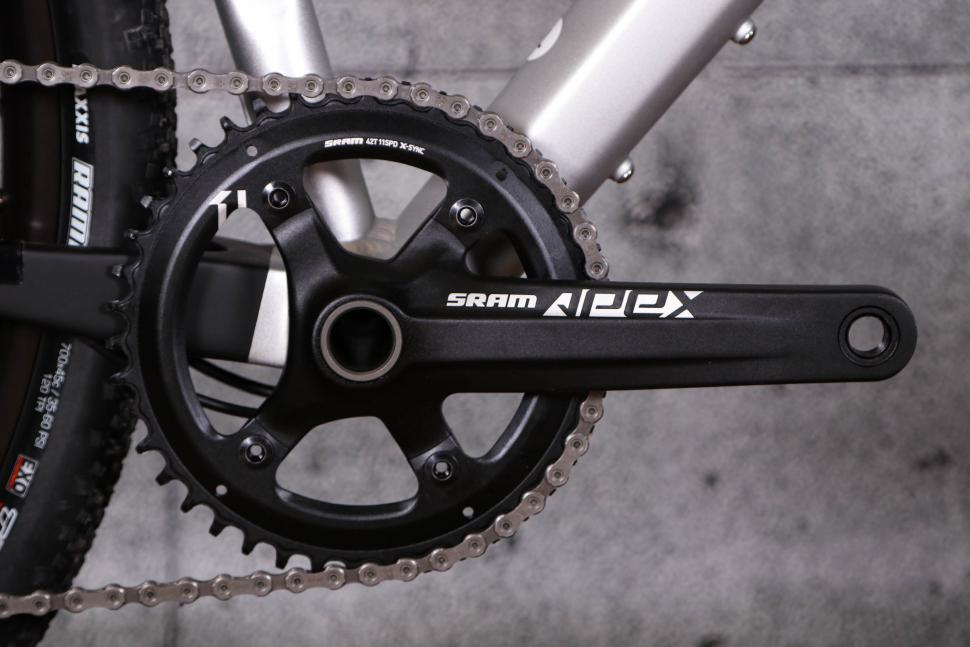


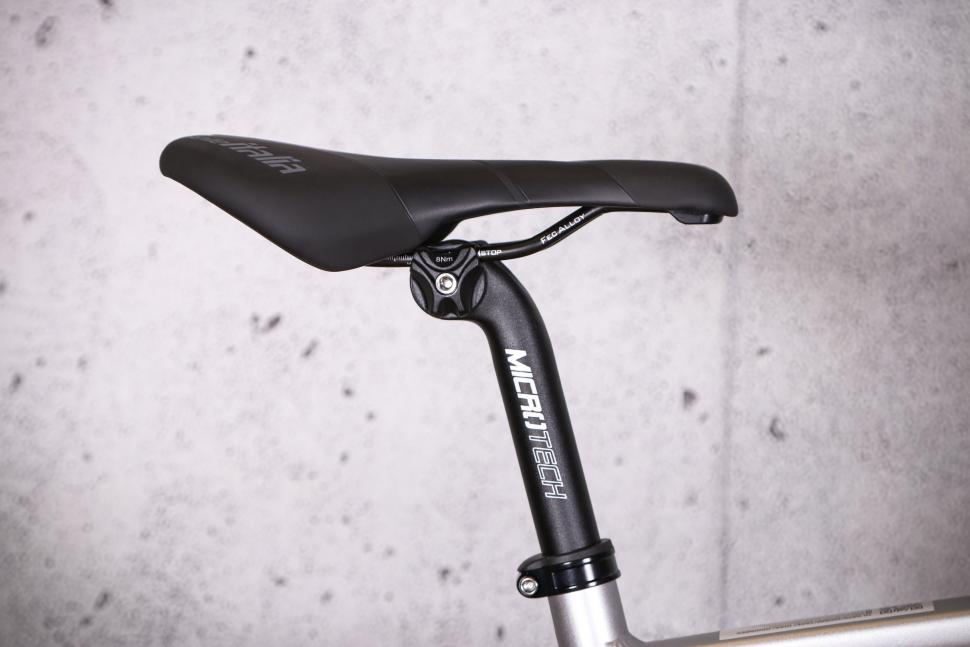
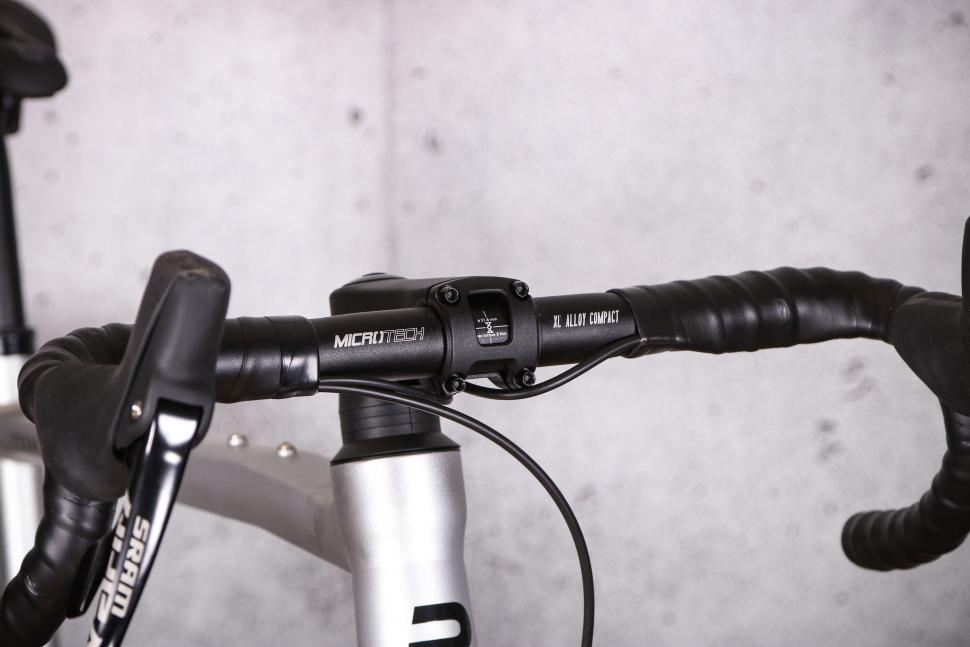
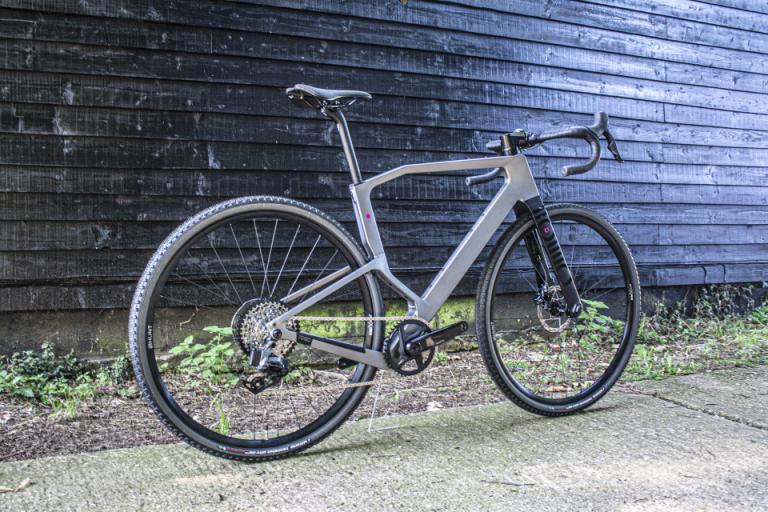
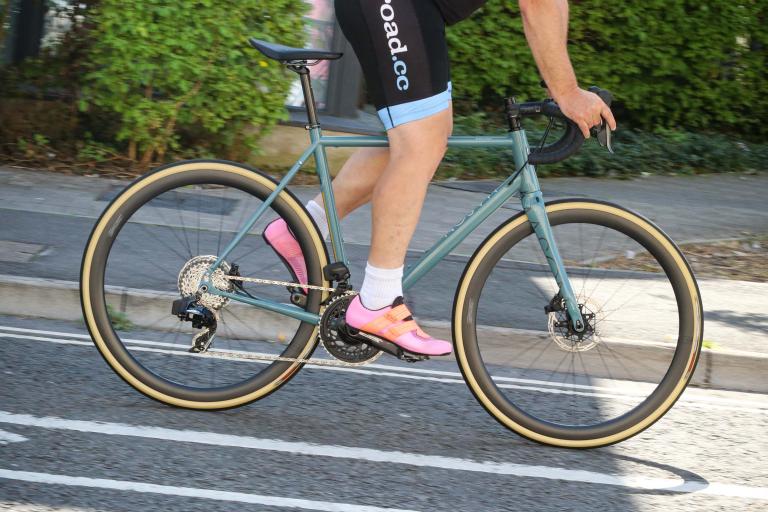
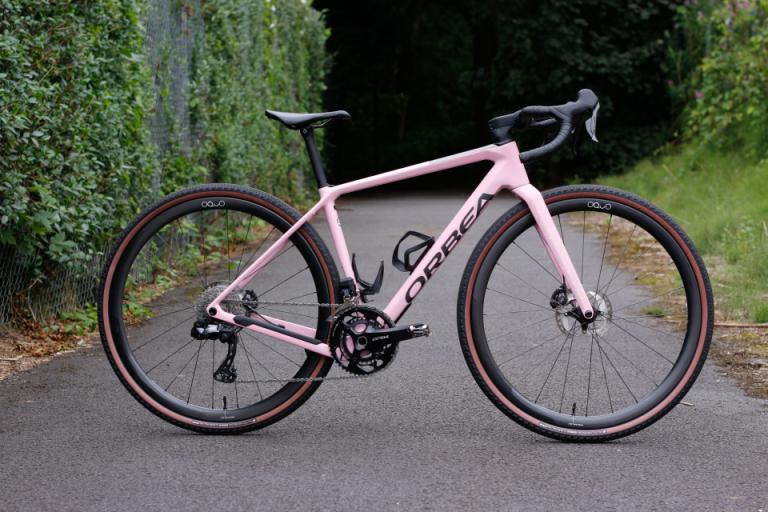
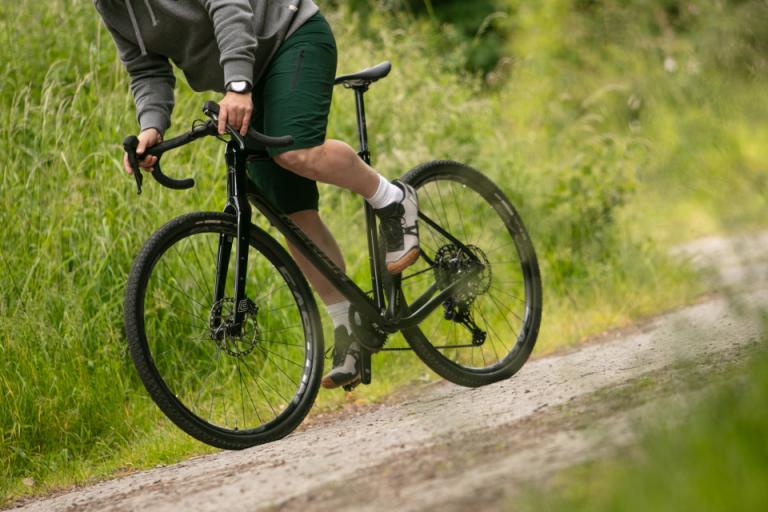
More notice needed for Remembrance Sunday road closures...
This is an impressive new way of avoiding work by the police! Several crimes here (eg. phone use) - so is the new game "if we can identify *one*...
Which explains a lot. I reckon the standard of driving in the UK has noticeably decreased in the last 5-10 years. A host of factors no doubt, but I...
He wasn't brake-checking me, he was trying to get me to stop. Nothing good would have come from me stopping.
It was designed around 28mm tyres but there's lots of clearance and could certainly take bigger tyres.
A dinosaur version is shurely for the kiddies. Myself I'd like The Hindenburg. There may be The Freisian, filled with methane rather than hydrogen,...
When I see SLOW HORSES I always think ah, so this is where the ones I bet on are kept...
No great mystery in either case, surely? Both US politician and the motor trade say "choose us and your life will be better and easier!" And other...
theres an attitude I encounter alot locally, and demonstrated in bucket loads by drivers on my commute home tonight, that cyclists shouldnt be on...
If the chains snap that is lack of build quality or material.....